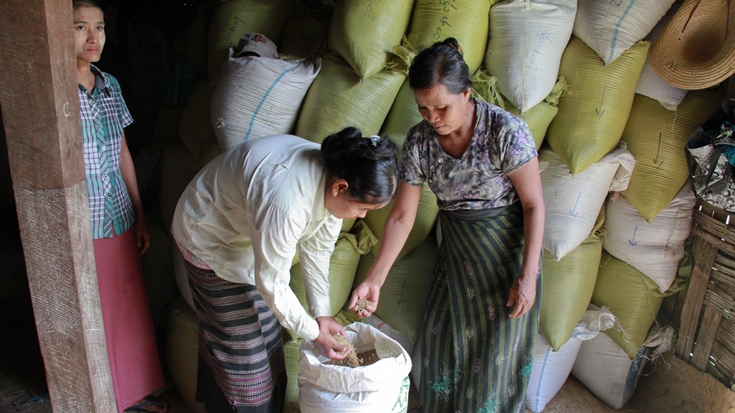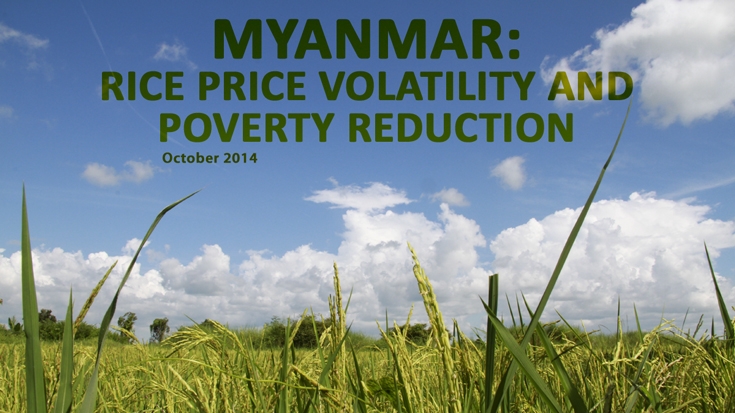Myanmar is a low-income country with a high poverty rate (37%). Rice, its main farm income source, generates livelihoods for over 50% of the population. People spend more than 60% of their income on food. Rice, a major staple, accounts for 25 to 50% of their expenditures. Even temporary increases in rice prices reduce real income and household spending on other nutritious food, health, and education.
A majority of rural people live close to the poverty line. Many are at high risk of falling into poverty whenever rice prices fluctuate. Rice price volatility- because it directly affects most of the population- matters for poverty reduction in Myanmar.
Key Findings
- Price fluctuations are common in agricultural markets. However, rice price volatility in Myanmar is more profound than in neighboring rice net-exporter countries like Cambodia, Vietnam, and Thailand.
- The economic liberalization in 2004 removed local trade barriers and this reduced risks and price volatility in the domestic rice market. Even if Myanmar’s price fluctuations decreased in recent years (compared to the mid-2000s), it remains high.
- Beyond price volatility, rice prices have risen by 41% between 2009 and 2013. This is much higher than that of rice exporters in neighboring countries like Thailand and Cambodia.
- The high concentration of the paddy harvest in November and December is the main cause of rice price volatility. Nearly 70% of paddy is harvested in just two months of the monsoon season. This results into sharp price drops from December to January and spike-ups between May and October.
- Production in dry season is small due to a lack of rice varieties with different harvesting periods, growth durations, and appropriate irrigation.
- The rice market is fragmented and weakened due to poor roads and low phone coverage. There is also inaccurate information on rice production, consumption, trade, and stocks. Due to the latter, farmers, millers, exporters, and the government often overreact when there are minor price changes. This ignites volatility even further, given that private stocks are too small to buffer price fluctuations.
- Poor diversification of export markets also contribute to price volatility. Most of the formal rice exports go to Africa with stable prices. The informal cross-border export to China, in contrast, has been highly unpredictable. The recent closure of informal trade with China is an example of such unpredictability.

